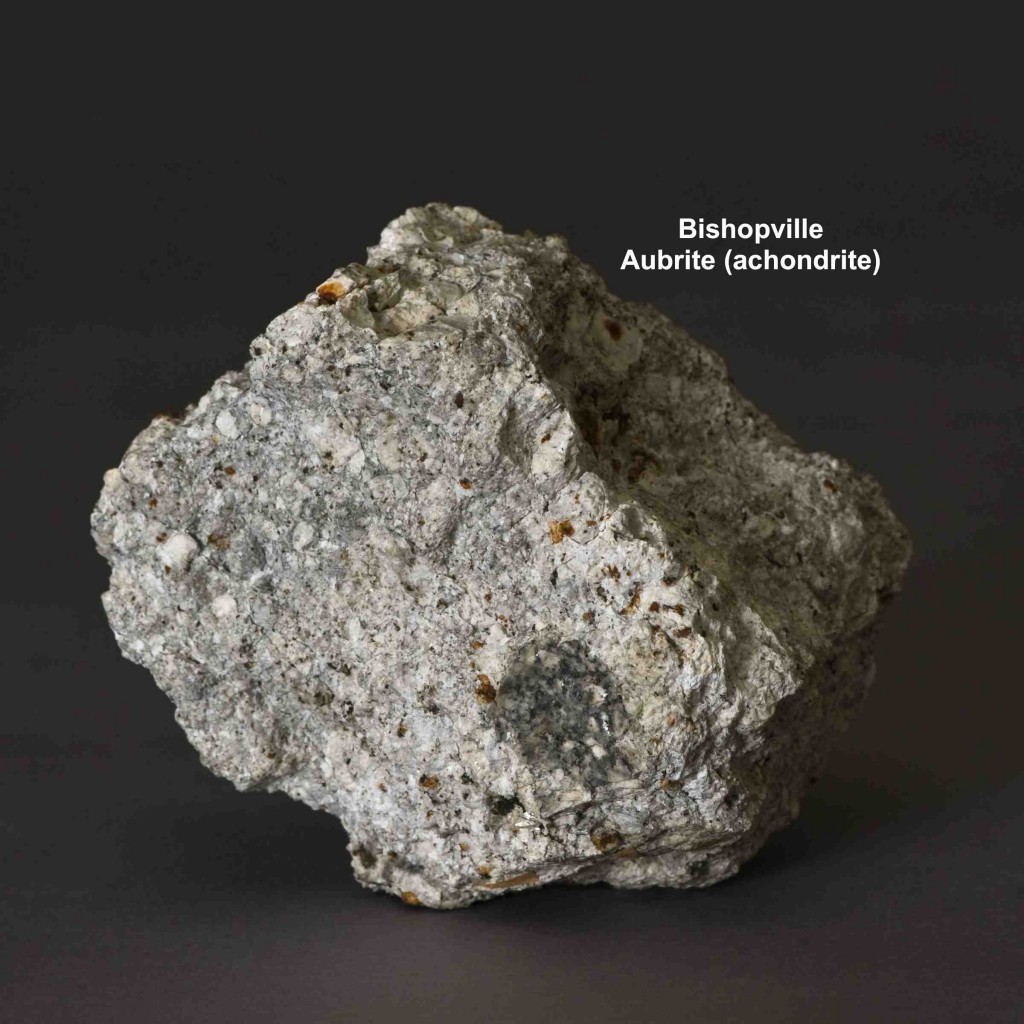Bishopville is an aubrite meteorite that fell in Sumter County, South Carolina, on March 25, 1843.
Its meteor and the explosion which accompanied the fall were witnessed over an area 30 to 40 miles in diameter. One six-kilogram stone was seen to strike the Earth and recovered from a depth of about three feet in the soft soil.
Aubrite mineralogy is dominated by enstatite, a pyroxene mineral containing Mg, Si, and O. This mineral is white in Bishopville, as opposed to the more normal green to brown, because it contains so little iron.
Aubrites are so reduced that they contain minerals not found, or rare on Earth, including:
- Caswellsilverite NaCrS2
- Daubréelite FeCr2S4
- Oldhamite CaS
- Perryite (Ni,Fe)5(Si,P)2
- Schreibersite (Fe,Ni)3P
To date, 6 kg (13 lb) of the Bishopville meteorite have been recovered.
Read the Meteoritical Bulletin entry for Bishopville, here!

Photo by L. Garvie, © ASU/CMS.



